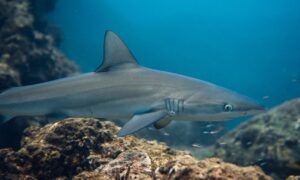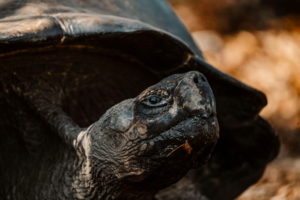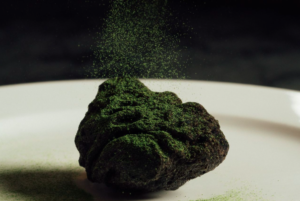As summer approaches and the beach and ocean breeze beckons, now is the perfect time to plan your Galapagos Islands getaway. Let the colorful beaches of the island’s fuel your wanderlust!
The Galapagos Islands are home to some of the world’s most remarkable beaches. Here, you will see so many colorful sand beaches, including powdered white, mixed coral, Pacific black, red, and olive green sand beaches. The beautiful landscape will inspire, relax you, and transport you to another world. Get ready…
Which beach is best?
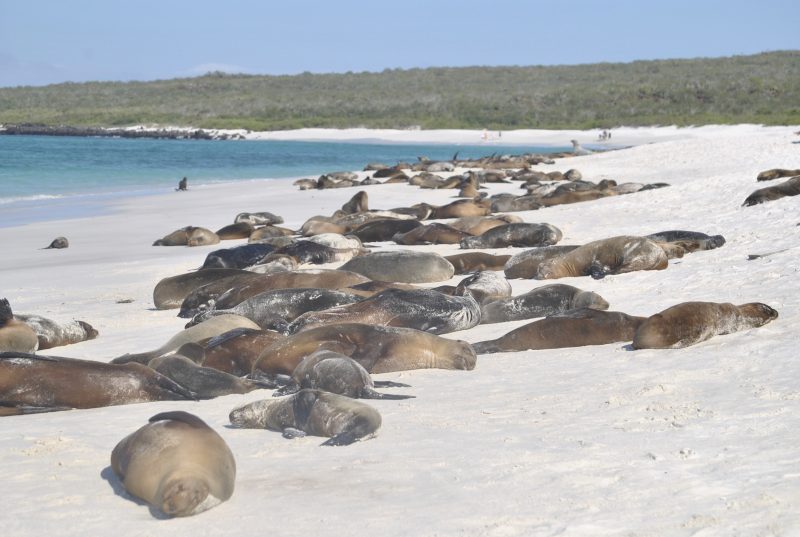
Gardner Bay, Española
Española is the southernmost of the Galapagos Islands and is also one of the oldest. This island is visited on our Itinerary A. Española’s Gardner Bay is the ultimate “relaxing” beach. Here you will find a long stretch of white power sand – this expansive white sand beach one of the longest in Galapagos, reaching 2 km long! Gardner Bay is also home to hundreds of sea lions. You may also see numerous species of Darwin’s finches and Española Mockingbirds during your trip to this beautiful beach. Ecoventura passengers can swim or snorkel in the calm, shallow water near the beach. Don’t be surprised if you even run into Green Sea Turtles as you explore the waters of Gardner Bay!
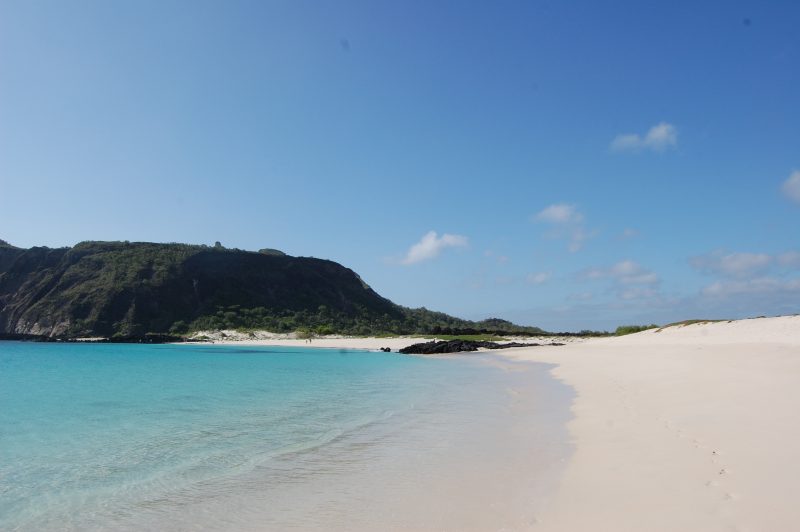
Cerro Brujo, San Cristobal
Located on the north coast of San Cristóbal Island, Cerro Brujo is another favorite white sand beach of Ecoventura passengers and is visited on Itinerary A. Here you will find a vast array of flora and fauna. Cerro Brujo is also home to a lagoon perfect for bird watching. Cerro Brujo has a great viewpoint of Kicker Rock (pictured above). Similar to Gardner Bay, our passengers love to snorkel and swim on this stunning beach.
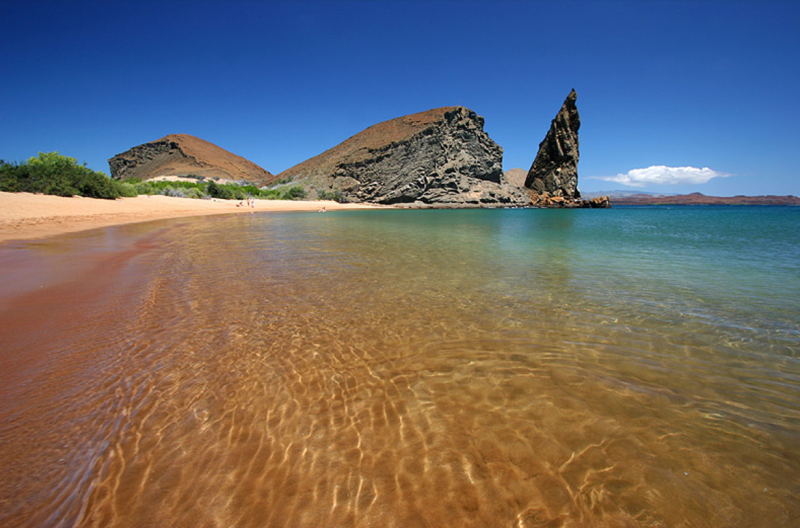
Bartolomé Beach
This beach is in Sullivan Bay to the east of Santiago Island. Home to Pinnacle Rock, a volcanic cone, it gives visitors perfect access to breath-taking viewpoints as well as sandy beaches that are ideal for snorkeling and swimming. On the northern beach, where swimming is permitted, is one of the smaller Green Sea Turtle nesting grounds from January to March. Also, if you are lucky enough, you may see penguins playing nearby! The dive site encircles the large portion of the island. Species most often seen include penguins, sea turtles, sharks, and rays. This beautiful inlet is perfect to swim in its turquoise waters and lounge on the soft sandy beaches.
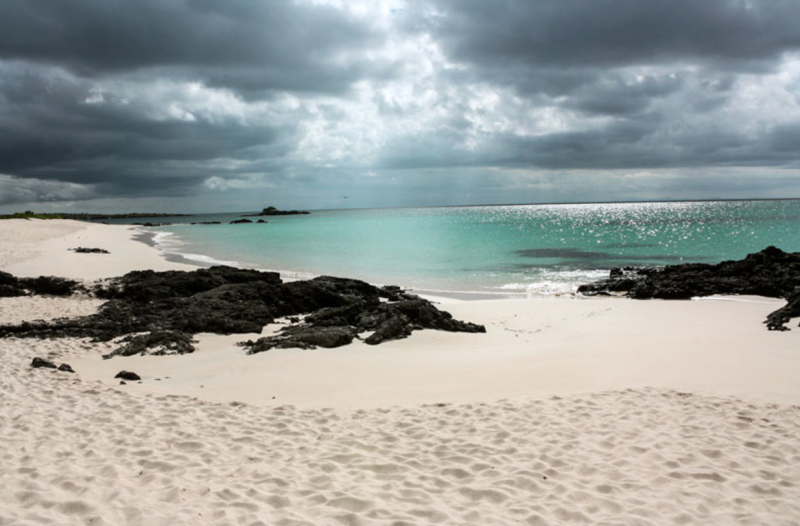 Las Bachas Beach
Las Bachas Beach
This beach is located on the northeastern coast of Santa Cruz, and is a major spot for sea turtles, flamingos, and migratory birds. The white sand beaches are often uninhabited by people, so you can spend plenty of time relaxing and bird watching without a lot of disturbances. There is a reason behind its pure white sands: decomposed coral! The combination of clear waters and soft sand make this the perfect swimming destination.
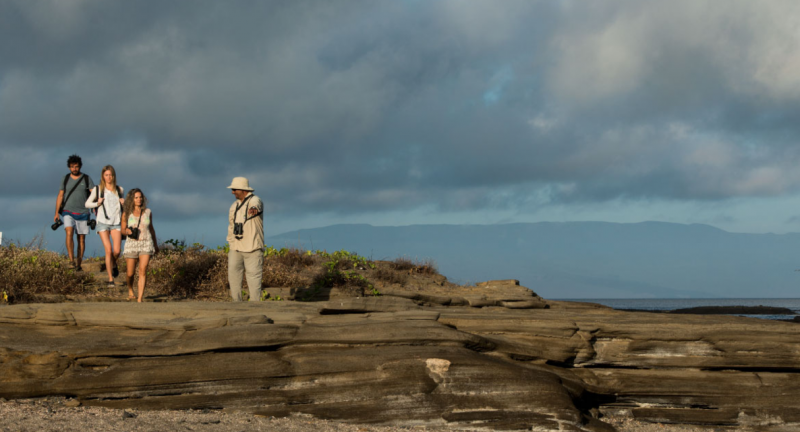
Puerto Egas
Found on the northwestern side of Santiago Island, this beach is one of the most famous on the Galapagos archipelago. This is partly due to to its black sand beach, which was formed from lava flow on the island. You may even have a chance to walk across the black pahoehoe lava, hardened and relatively flat to walk on. Don’t forget to bring your camera!
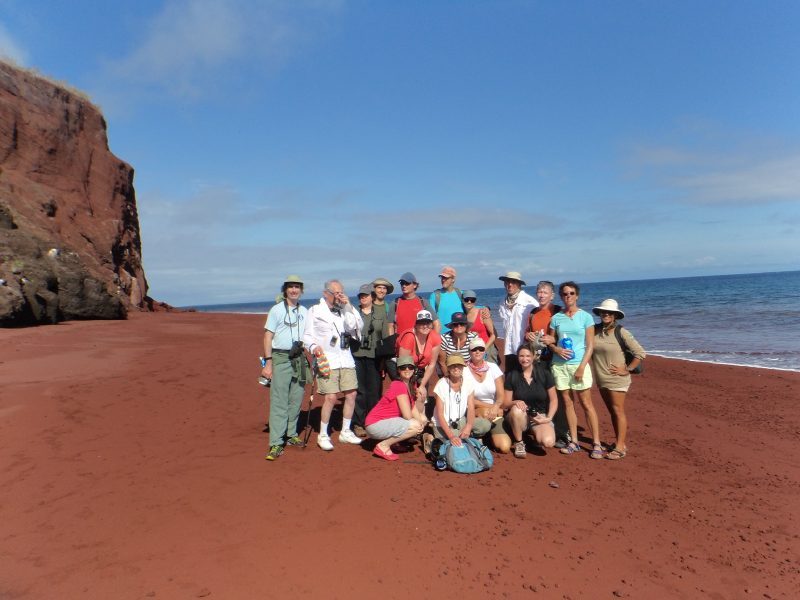
Rabida Island
Another beach that gets its color from volcanic activity is Rabida Island. This stunning red rock beach gets its color from the high iron content in the volcanic material on the island. An ideal location for pink shrimp larva makes Rabida a perfect spot for flocks of flamingos, and other birds as well, such as Darwin Finches and Blue-footed and Nazca Boobies. Trails will lead you through Galapagos Cactus and Palo Santo trees, and you may even get a chance to see marine iguanas huddled together for warmth! Brown pelicans also make this island a home for their nests. This beach is a must-see for photographers and adventure seekers alike.
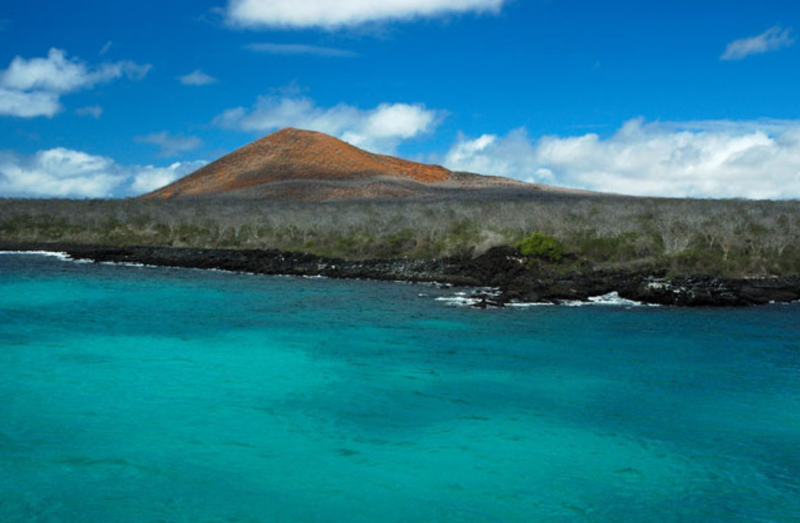
Punta Cormorant, Floreana
Olivine crystals give this beach it’s gorgeous olive green color! It is also the home of the very first post office established in 1793, and the Galapagos first human resident, Patrick Watkins, who lived there from 1807-1809. Today, the island is home to the recovering populations of the Floreana mockingbird, as well as the flamingo lagoon, where visitors can watch flamingos sift through the shallow water for shrimp. Cormorant Point has a greater diversity of plants than most other areas, including some endemic to the point and surrounding areas. This island is the perfect spot to get a shot of sea turtles, sea lions, and a wide variety of fish.
Which beach in the Galapagos Islands is your favorite? Let us know in the comments! With so many to choose from, we know you’ll find one that is perfect for you. We can’t wait to see you there.


